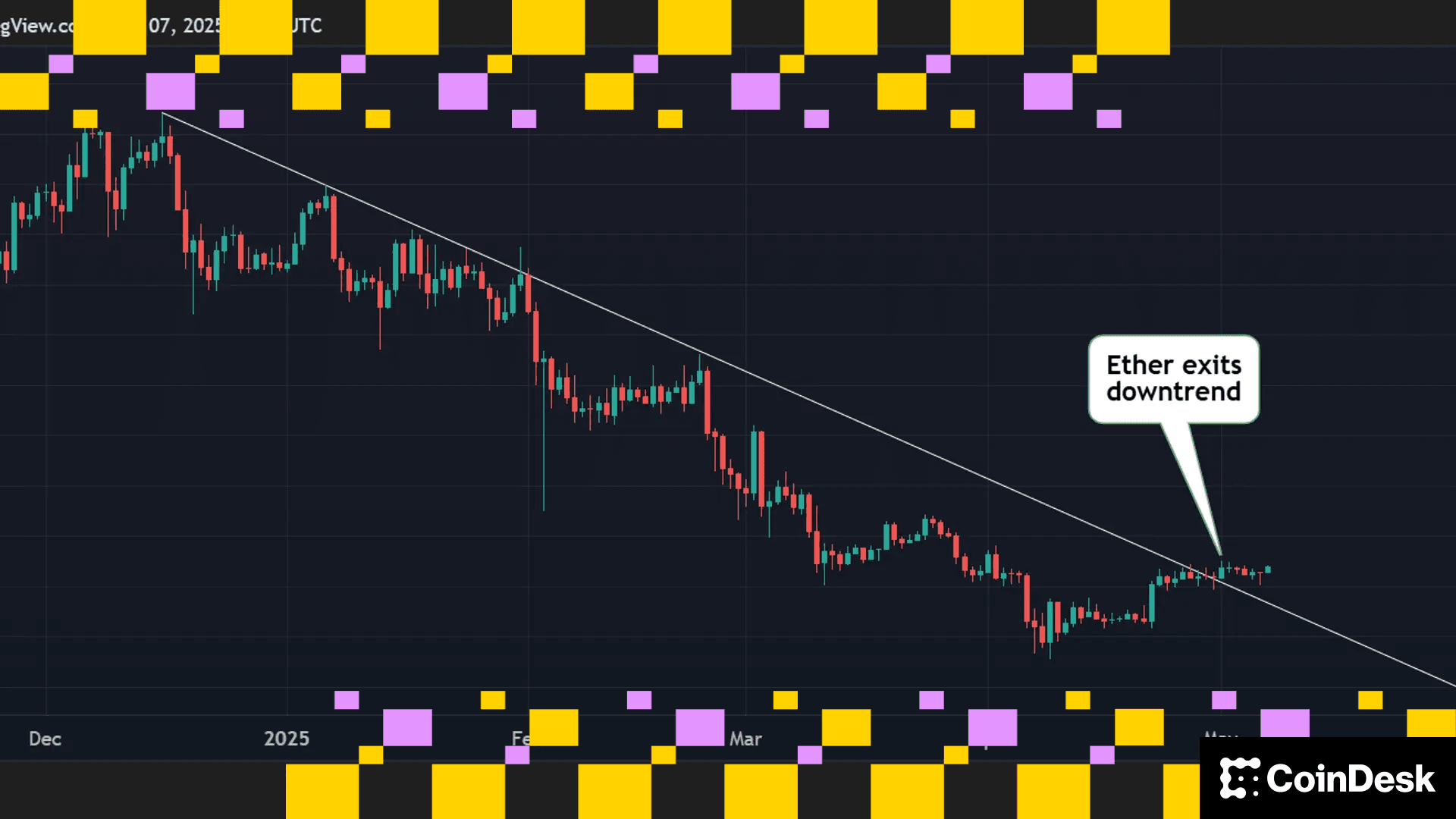Miners Going Public Amid Bitcoin Slump Face Tough Months Ahead
Production numbers for the next few months will be crucial for miners going public soon.

Crypto miners that are slated to go public soon are likely to face a tough few months following the recent drop-off in bitcoin's price and the broader crypto market.
The slump in crypto prices could affect companies such as Core Scientific, which is planning to become a public company through a merger with special purpose acquisition company (SPAC) Power & Digital Infrastructure Acquisition Corp., and bitcoin miner Rhodium Enterprises, which is planning an almost $2 billion dollar IPO.
Bitcoin prices have fallen more than 30% since reaching an all-time high in November, and investors and the number of miners going public have subsequently slowed.
“There are a number of SPACs and IPOs that will look to close in the first half of 2022, such as Core Scientific, PrimeBlock, Rhodium and Griid,” Luxor Mining’s co-founder and Chief Operating Officer Ethan Vera said. These companies looking to go public not only face a correction in crypto prices but also an increasingly crowded market, he added.
Stronghold Digital fell more than 50% since its trading debut in October on the Nasdaq; meanwhile, another miner, Iris Energy, also declined more than 50% since going public in November.
Gwyneth Paltrow-backed bitcoin miner TeraWulf, which was a SPAC play, fell in its trading debut in December, and the shares have traded sideways since then, according to TradingView data.
With bitcoin's price falling more than 30% since reaching its all-time high in November, and competition expected to rise as the network's hashrate increases this year, investors will be eyeing miners’ valuations and their growth strategies. Companies that can distinguish themselves in the increasingly competitive sector will be the ultimate winners.
“In order for these [new] companies to retain their proposed valuation when trading, they will need to find ways to differentiate their businesses from the existing operators,” Vera said. He also noted that production numbers from these companies for January and February will be a strong indicator where these companies will likely start trading when they go public.
However, for investors to really pay up for a company, they will need to see more longer-term strategy from the companies, said Eric F. Risley, managing partner of crypto mergers and acquisitions firm Architect Partners. Risley added that crypto miners that can operate most efficiently are most likely to thrive amid crypto markets’ fluctuations.
“We believe the mining haves and have nots (efficiency of operations) will reveal themselves in the next 24 months, and the haves will enjoy stronger valuations and strategic flexibility and growth options,” he said.
Read more: Bitcoin Miners Are Starting to ‘Hodl’ Again, but for How Long?
More For You
Exchange Review - March 2025

CoinDesk Data's monthly Exchange Review captures the key developments within the cryptocurrency exchange market. The report includes analyses that relate to exchange volumes, crypto derivatives trading, market segmentation by fees, fiat trading, and more.
알아야 할 것:
Trading activity softened in March as market uncertainty grew amid escalating tariff tensions between the U.S. and global trading partners. Centralized exchanges recorded their lowest combined trading volume since October, declining 6.24% to $6.79tn. This marked the third consecutive monthly decline across both market segments, with spot trading volume falling 14.1% to $1.98tn and derivatives trading slipping 2.56% to $4.81tn.
- Trading Volumes Decline for Third Consecutive Month: Combined spot and derivatives trading volume on centralized exchanges fell by 6.24% to $6.79tn in March 2025, reaching the lowest level since October. Both spot and derivatives markets recorded their third consecutive monthly decline, falling 14.1% and 2.56% to $1.98tn and $4.81tn respectively.
- Institutional Crypto Trading Volume on CME Falls 23.5%: In March, total derivatives trading volume on the CME exchange fell by 23.5% to $175bn, the lowest monthly volume since October 2024. CME's market share among derivatives exchanges dropped from 4.63% to 3.64%, suggesting declining institutional interest amid current macroeconomic conditions.
- Bybit Spot Market Share Slides in March: Spot trading volume on Bybit fell by 52.1% to $81.1bn in March, coinciding with decreased trading activity following the hack of the exchange's cold wallets in February. Bybit's spot market share dropped from 7.35% to 4.10%, its lowest since July 2023.
Більше для вас











